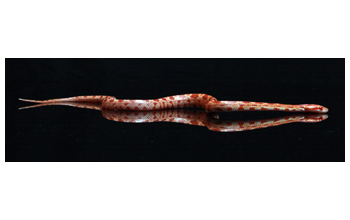Multimedia Gallery
Full view of a corn snake
A full view of a corn snake.
More about this image
If you view a snake from the side, you can see that they will often lift parts of themselves from the ground while they slither. The snake's weight is then concentrated on the remaining areas of contact. When researchers at the Georgia Institute of Technology incorporated this behavior into a theoretical model, they found increases in both body speed and efficiency.
Snake locomotion may seem simple compared to walking or galloping, but in reality, it's no easy task to move without legs. Previous research had assumed that snakes move by pushing off of the rocks and debris around them, but that didn't explain how they can move in areas where there isn't anything to push on. Then, a National Science Foundation-supported study (grant PHY 08-48894) by David Hu, a mechanical engineer at Georgia Tech, and his team found that it's all in the snake's design--specifically, their scales.
Overlapping belly scales provide friction with the ground that gives snakes a preferred direction of motion, like the motion of wheels or ice skates. And like wheels and ice skates, sliding forward for snakes takes less work than sliding sideways.
In addition, snakes aren't lying completely flat against the ground as they slither. They redistribute their weight as they move, concentrating it in areas where their bodies can get the most friction with the ground and therefore maximize thrust. In this way, snake slithering is not unlike human walking--we, too, shift our weight from left to right to enable us to move.
To learn more about this research, see the LiveScience article Study shows how snakes slither. (Date of Image: 2009)
Credit: ©Grace Pryor, Mike Shelley and David Hu, Applied Mathematics Laboratory, New York University, and Department of Mechanical Engineering, Georgia Institute of Technology
Images and other media in the National Science Foundation Multimedia Gallery are available for use in print and electronic material by NSF employees, members of the media, university staff, teachers and the general public. All media in the gallery are intended for personal, educational and nonprofit/non-commercial use only.
Images credited to the National Science Foundation, a federal agency, are in the public domain. The images were created by employees of the United States Government as part of their official duties or prepared by contractors as "works for hire" for NSF. You may freely use NSF-credited images and, at your discretion, credit NSF with a "Courtesy: National Science Foundation" notation.
Additional information about general usage can be found in Conditions.
Also Available:
Download the high-resolution JPG version of the image. (614 KB)
Use your mouse to right-click (Mac users may need to Ctrl-click) the link above and choose the option that will save the file or target to your computer.



 All images in this series
All images in this series